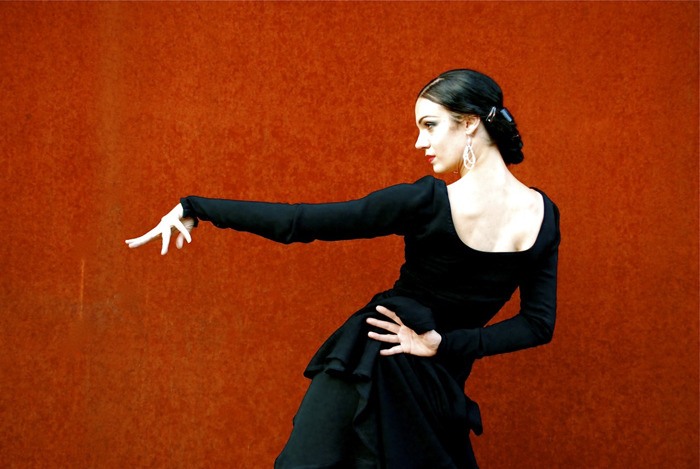Getting chilled by autumn winds?
Well, you can warm up with the exciting sounds and sights of “3 Glorias, Flamenco en Vivo” a tribute to three components of flamenco.
But if you think this show is only about a twirling lady in high heels, you are wrong.
There will be dancing, but the real essence of flamenco isn’t in the feet, it’s in the throat.
“Singing is the most important part of flamenco,” said Savannah Fuentes, flamenco dancer and event coordinator. “Without the singing it’s just like playing the drums all day.”
Fuentes, a Seattle native, performed in a similar show on Lopez in February and that show’s success prompted her to bring flamenco to San Juan.
The show is Monday Oct. 24, 7 p.m. at the San Juan Community Theatre.
Traditional flamenco is performed live and consists of several components; “cante,” a Spanish word meaning sing, “toque,” meaning guitar and “baile,” meaning dance.
There is also the lesser known component “jaleo,” which roughly translates into “hell-raising” and involves hand clapping, foot stomping and shouts of encouragement.
Performers and the audience can give “jaleo.”
“Many times I have heard someone, who may be experiencing live Flamenco for the first time, shout ‘woohoo’ during a footwork build up,” said Fuentes. “And it worked. I think it is great that they can participate in that way.”
A brief history
The gypsies arrived in southern Spain from India around 1425. By 1468, the gypsies, moors and Jews, were persecuted by the Catholic monarchs and the Spanish Inquisition.
The gypsies were ordered to stop wearing their style of dress, cease speaking their language, and to seek steady employment, which prohibited them from their livelihoods of horse dealing, trading at fairs and “sorcery.”
These laws and restrictions drove the gypsies, moors and Jews to remote and treacherous mountainous areas. In the wilderness, these cultures shared their music and dance — a fusion know today as flamenco.
The music, passed through generations by oral tradition, is identified as letters or phrases instead of songs. The phrases range from mournful to joyous.
“The magic of flamenco is it’s unique ability to evoke the full spectrum of human emotions,” said Fuentes.
The performers
Born into a family of Flamenco artists in Madrid, Saray Muñoz’s powerful voice and skill level has taken her on tours around the world.
“Her singing is a little jazzy, more of a modern version of flamenco,” Fuentes said. “There are only a few accompanists who can play with her properly, they have to have a good ear. Basically she’ll take one note and run all over the place with it, and he’ll have to follow.”
Muñoz will be accompanied by guitarist and composer, Pedro Cortes, who comes from a family of Spanish gypsy guitarists.
Fuentes says flamenco singing is quite rare and that’s why she’s taking the show on tour — to share this music with small communities that don’t have access to the art form.
Well, no access except for Youtube, where you can hear Muñoz’s primitive cry of song — sorrowful and haunting — something out of the ancient world that still resonates with modern audiences.
What’s not to love?
Fuentes took one class when she was 17 and was struck by the emotion of the music and the sounds of people passionately clapping.
“I’ve just got a chip in my brain and I just couldn’t stop, but it hasn’t been easy,” she said. “A lot of people fall in love with flamenco, but don’t stick with it. It takes hours and hours of your life.”
Fuentes performs regularly and teaches private and group flamenco classes throughout Washington state.
“I’m very nervous, if you care about your show you are nervous,” said Fuentes about performing with such big names out of the flamenco world. “There is so much fear for the state of the economy and here I am making art. But you can’t be afraid.”
You’ll recognize Fuentes during the show, even if she’s not dancing because she’ll be the one with tears streaming done her face when Muñoz sings.
You might feel yourself moved by the music too, but Fuentes said, “Everyone’s reaction to flamenco music is different, that is what is so great about it.”
For more info, visit www.sjctheatre.org and www.savannahfuentes.com.



